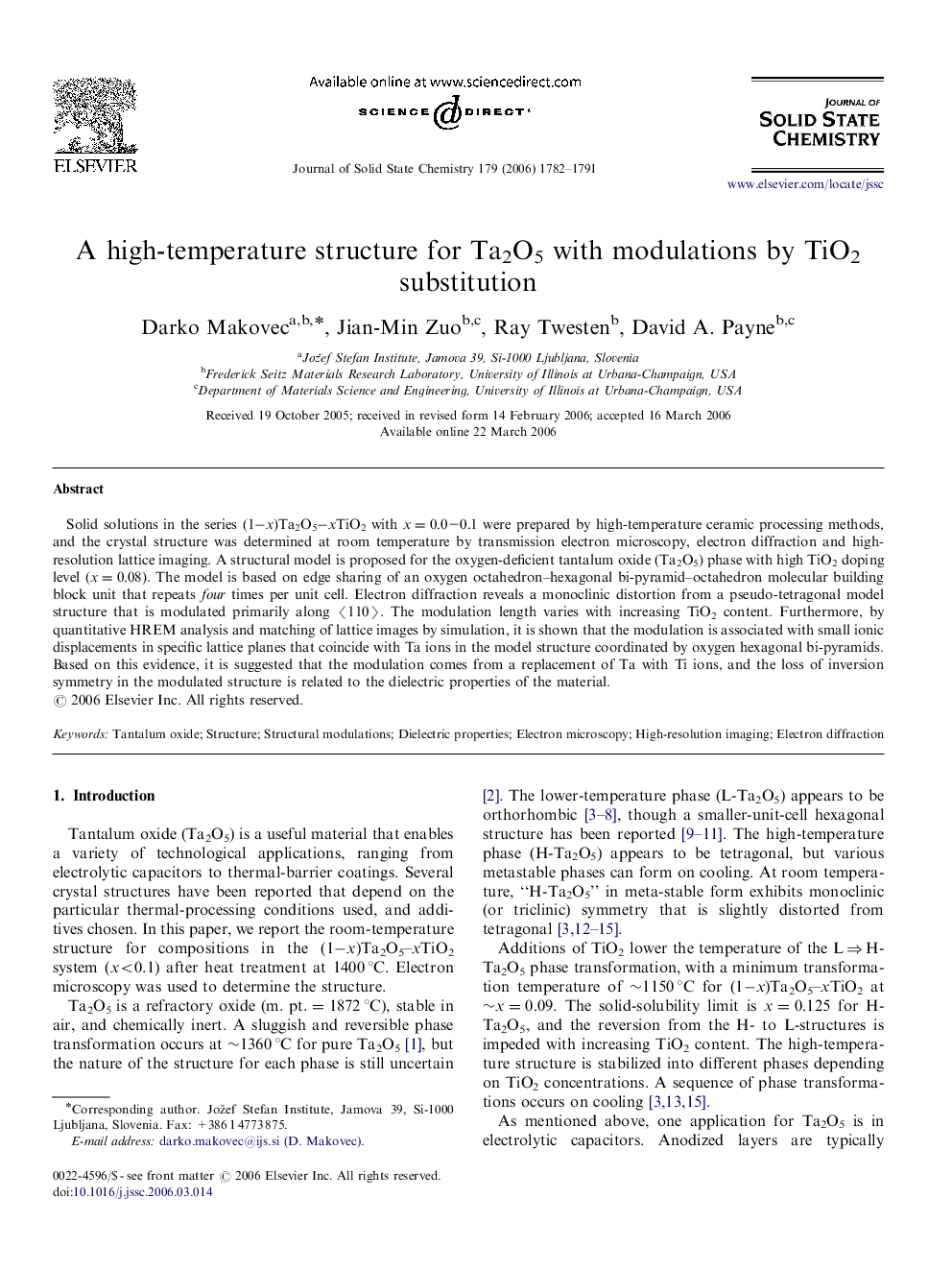| Article ID | Journal | Published Year | Pages | File Type |
|---|---|---|---|---|
| 1330045 | Journal of Solid State Chemistry | 2006 | 10 Pages |
Solid solutions in the series (1−x)Ta2O5−xTiO2 with x=0.0–0.1x=0.0–0.1 were prepared by high-temperature ceramic processing methods, and the crystal structure was determined at room temperature by transmission electron microscopy, electron diffraction and high-resolution lattice imaging. A structural model is proposed for the oxygen-deficient tantalum oxide (Ta2O5) phase with high TiO2 doping level (x=0.08x=0.08). The model is based on edge sharing of an oxygen octahedron–hexagonal bi-pyramid–octahedron molecular building block unit that repeats four times per unit cell. Electron diffraction reveals a monoclinic distortion from a pseudo-tetragonal model structure that is modulated primarily along 〈110〉. The modulation length varies with increasing TiO2 content. Furthermore, by quantitative HREM analysis and matching of lattice images by simulation, it is shown that the modulation is associated with small ionic displacements in specific lattice planes that coincide with Ta ions in the model structure coordinated by oxygen hexagonal bi-pyramids. Based on this evidence, it is suggested that the modulation comes from a replacement of Ta with Ti ions, and the loss of inversion symmetry in the modulated structure is related to the dielectric properties of the material.
Graphical abstractBuilding block of the proposed structural model for H-Ta2O5.Figure optionsDownload full-size imageDownload as PowerPoint slide
